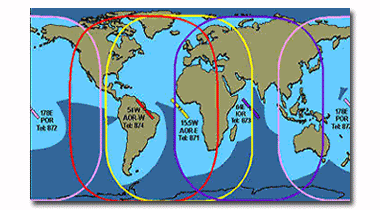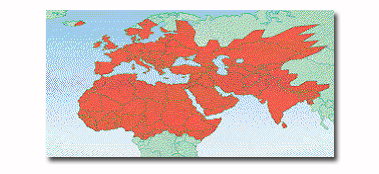|
|
 |
Knowledge Is Key
For Intelligent Decisions
Satellite Logic is a leading,
authoritative source of information in
the Satellite Industry. Located in the
heart of the Silicon Valley, Satellite
Logic provides one of the most
valuable and comprehensive
knowledge bases on the Satellite
market! This is a primary Worldwide
information center which enables our
clients to analyze, evaluate, inquire
and select their best tailored
solutions. Our company sets the
industry standards for targeted
buying leads, reflecting a dramatic
advance over traditional marketing
solutions.
|
|
|
 |

Inmarsat was the first company to enter the satellite
telecommunications arena in 1971. The company was originally
formed as an intergovernmental organization (IGO), with the aim of
providing safety and other communications for the maritime
community on a global scale. In the 1980's, Inmarsat began with a
customer base of around 900 ships. As their services expanded to
service clients in the air and the ground, the IGO became the first of
its kind to be transformed into a private company. Inmarsat currently
supports links for phone, fax and data communications to more than
287,000 ship, vehicle, aircraft and other mobile users.
Inmarsat provides their satellite telecommunications service by
operating a constellation of geostationary satellites that allow for
mobile phone, fax and data communications to every part of the
world except the north and south poles.
Inmarsat offers services and solutions which include mobile phones
and other devices sold by Inmarsat retailers in over 80 countries.
Inmarsat's satellites are controlled from their Network Operations
Centre (NOC) located in their headquarters in London, England.
London England is also home of Inmarsat's parent company, Inmarsat
Group Holdings Ltd. Located in close proximity to Inmarsat's HQ is
another IGO, the International Mobile Satellite Organization (IMSO),
which overlooks Inmarsat's public-service duties to support the Global
Maritime Distress and Safety System (GMDSS) and satellite-aided air
traffic control for the aviation community.
Through Inmarsat's service, customers are able to dial into the
international telephone network and send data over the Internet at any
time, simply by connecting to one of the Inmarsat satellites. These
customers include ship owners and managers, TV broadcasters,
international aid workers, national governments, commercial airlines,
banks and other financial institutions, and many others. Inmarsat's land
services essentially create a virtual office of sorts, since there is zero
need to connect to directly connect to terrestrial networks to roam.
Inmarsat's network supports use on a variety of ocean-going vessels
such as merchant ships, luxury yachts, and fishing boats. Network
use in the aviation industry range from use in commercial airliners to
use in corporate jets.
Inmarsat has a primary constellation of 4 Inmarsat I-3 and 4 I-2
satellites which occupy a geostationary orbit around earth, with an
optional fifth satellite that acts as a backup. One main advantage of
the Inmarsat I-3 satellites over the I-2 satellites is that they have the
capability to create spot beams and single large global beams.
Through the use of the spot beams, the extra power is channelled to
area of high demand, while still supplying standard services to smaller
and simpler terminals. Between the 4 satellites however, Inmarsat is
able to provide overlapping coverage for the surface of the Earth
(apart from the North and South poles). These satellites follow a
circular orbit in the plane of the Equator at a height of 35,600km. As a
result of the geostationary orbit, the satellites appear to hover over a
chosen point on the Earth's surface. This feature minimizes the
chance of an interrupted call.
When a call is made using Inmarsat's service, the call is directed to
their overhead satellite, and then to Inmarsat's NOC. The NOC is
supported by network co-ordination stations which function to assign a
channel to the mobile terminal and the appropriate LES (a terrestrial
land earth station gateway). From there, the call is then passed onto
the public telephone network. By having one NCS covering each
Inmarsat system (Inmarsat A, B, C etc.) and oceanic region, each of
Inmarsat's NCS' have the capability to communicate not only with
LES' within their regions, but with other NCS' and the NOC. Within
Inmarsat's coverage area, fast and efficient internet access is
available, allowing you to download 50K files or e-mail or attachments
in just 10 seconds. Regional BGAM access to Inmarsat's network is
provided through their Satellite Access Station (SAS), which is located
in Fucino, Italy.
Below is Inmarsat's global coverage:

Below is Inmarsat's regional BGAN coverage

Diagrams courtesy of Inmarsat
|
|
|
|
